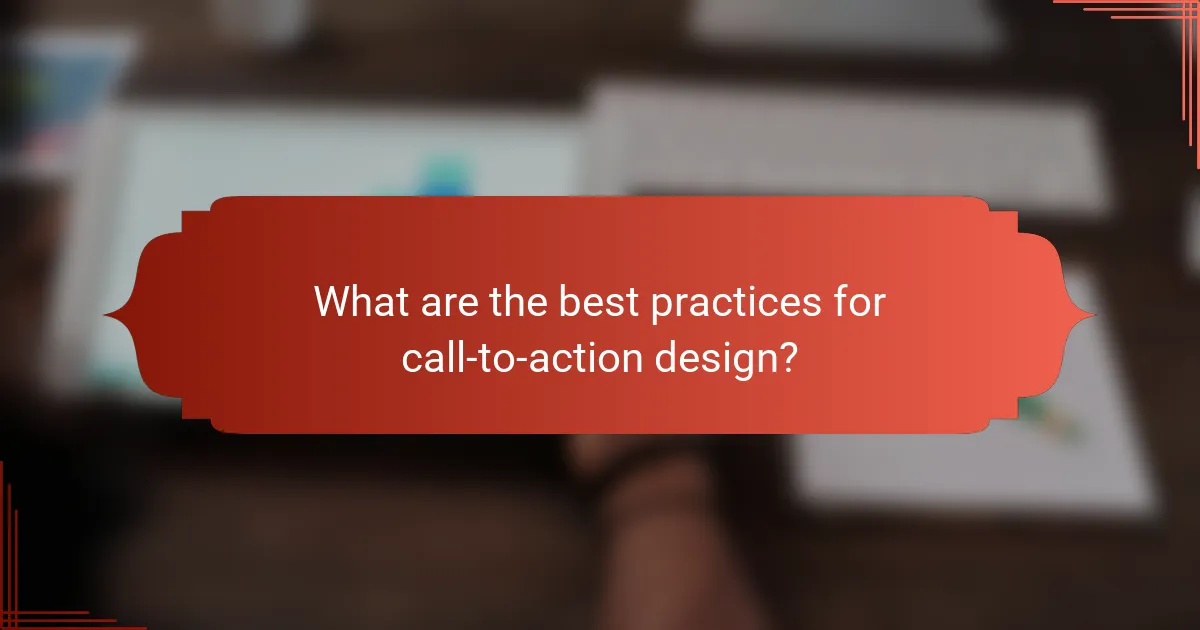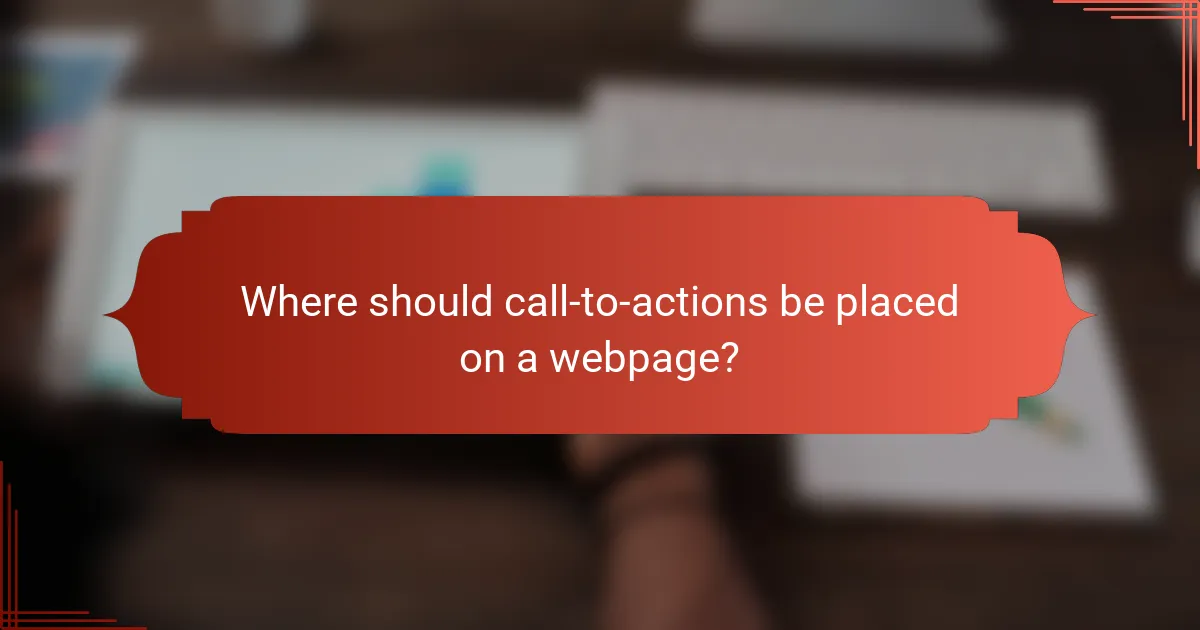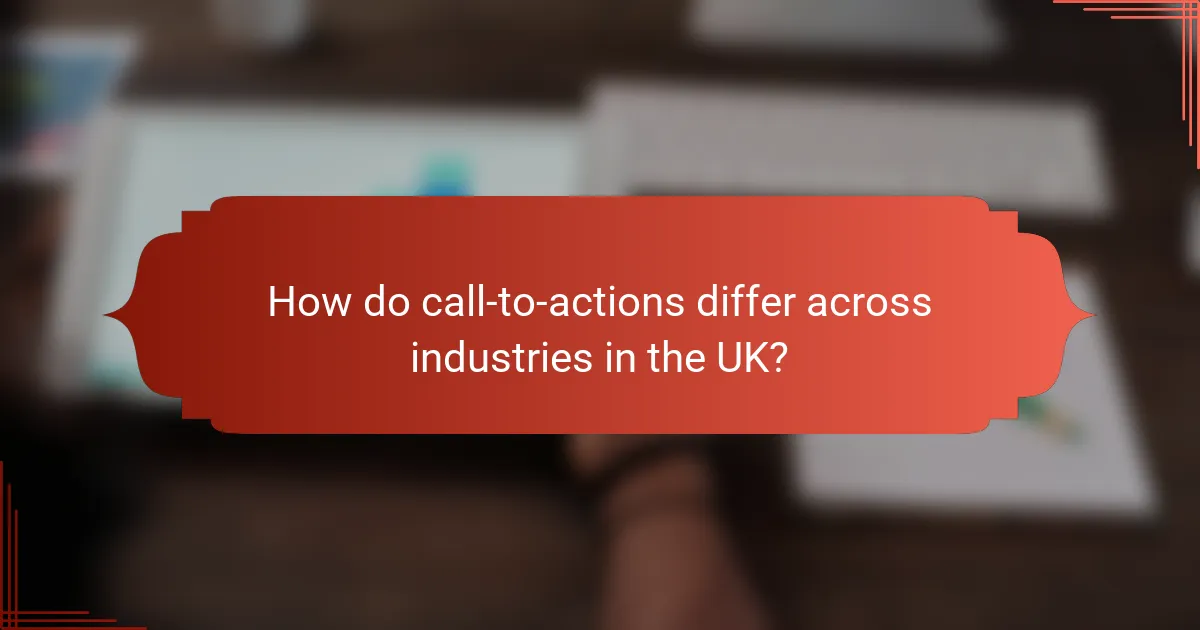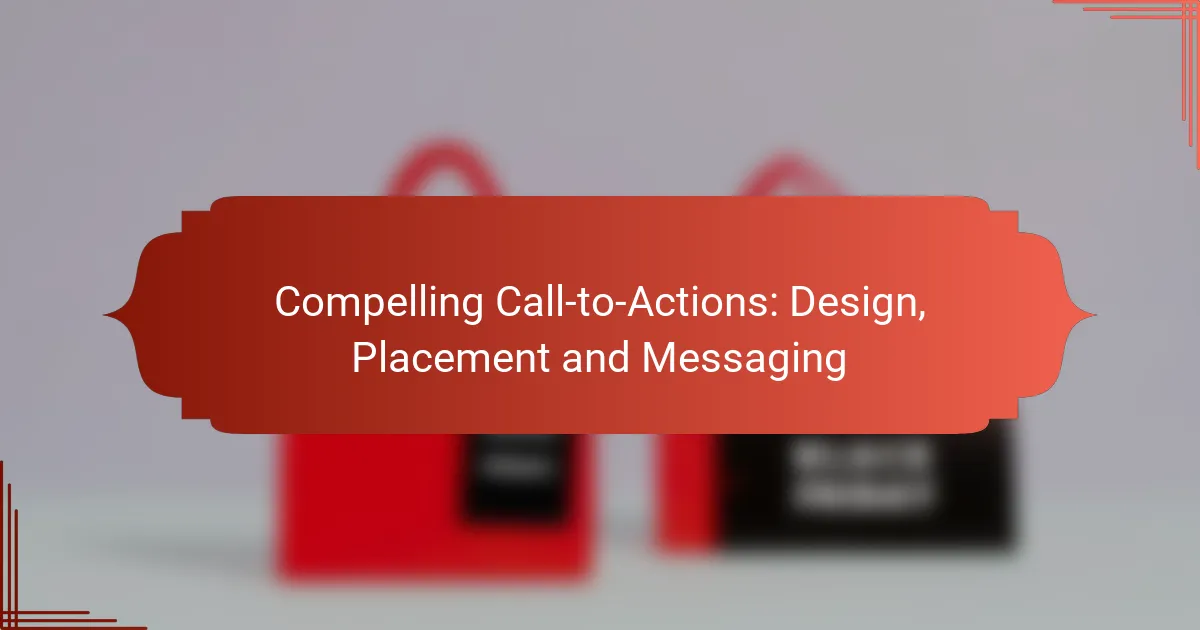Creating compelling call-to-actions (CTAs) is essential for enhancing user engagement and driving conversions on your website. By focusing on effective design, strategic placement, and persuasive messaging, you can significantly increase the likelihood of users taking the desired actions. Key elements such as contrasting colors, clear typography, and a sense of urgency play a vital role in making your CTAs stand out and resonate with your audience.

What are the best practices for call-to-action design?
Effective call-to-action (CTA) design is crucial for driving user engagement and conversions. Key practices include using contrasting colors, clear typography, and ensuring mobile responsiveness to enhance visibility and usability.
Use contrasting colors
Contrasting colors help CTAs stand out from the surrounding content, making them more noticeable. For instance, if your website has a predominantly blue color scheme, a bright orange or green button can draw attention effectively.
When selecting colors, consider accessibility standards to ensure that all users, including those with visual impairments, can easily identify and interact with your CTAs. Tools like color contrast checkers can help you assess this.
Incorporate clear typography
Clear typography is essential for ensuring that your CTA message is easily readable. Use bold, legible fonts that are large enough to be seen without straining the eyes.
Avoid overly decorative fonts that may confuse users. Stick to sans-serif fonts for a modern look, and ensure the text contrasts well with the button color for maximum clarity.
Utilize whitespace effectively
Whitespace, or negative space, around your CTA can significantly enhance its visibility. By providing ample space, you help users focus on the CTA without distractions from other elements on the page.
A good rule of thumb is to ensure that the CTA has at least 20-30 pixels of space around it. This separation creates a visual hierarchy that guides users toward the action you want them to take.
Ensure mobile responsiveness
With a growing number of users accessing websites via mobile devices, ensuring that your CTAs are mobile-responsive is vital. This means that buttons should be easily clickable and readable on smaller screens.
Test your CTAs on various devices to ensure they maintain their effectiveness. A common guideline is to make buttons at least 44 pixels tall to ensure they are easily tappable.
Apply consistent branding
Consistent branding across your CTAs reinforces brand identity and builds trust with users. Use your brand colors, fonts, and styles to create a cohesive look that aligns with the overall design of your website.
Additionally, maintain a consistent message in your CTAs. For example, if your brand emphasizes simplicity, your CTA should reflect that with straightforward language and a clean design.

Where should call-to-actions be placed on a webpage?
Call-to-actions (CTAs) should be strategically placed on a webpage to maximize visibility and engagement. Key locations include areas where users are most likely to interact, such as above the fold, at the end of content sections, in pop-ups, and on dedicated landing pages.
Above the fold
Placing CTAs above the fold ensures they are visible without scrolling, capturing users’ attention immediately. This area typically includes the top portion of a webpage, where important messages can lead to higher click-through rates.
Consider using contrasting colors and clear, concise messaging to make CTAs stand out. For example, a prominent “Sign Up Now” button can effectively encourage immediate action.
At the end of content sections
CTAs positioned at the end of articles or sections can capitalize on user engagement after they consume content. This placement allows users to take action when they are most informed and interested.
To enhance effectiveness, tailor the CTA to the content just read. For instance, after a blog post about fitness, a “Join Our Fitness Program” button can resonate well with readers.
In pop-ups and slide-ins
Pop-ups and slide-ins can be effective for capturing attention without disrupting the user experience too much. These elements can appear after a user has spent a certain amount of time on the page or scrolled a specific percentage down.
However, use them sparingly to avoid annoying users. A well-timed pop-up offering a discount can significantly boost conversions, especially if it aligns with the user’s interests.
On landing pages
Landing pages are designed specifically to drive conversions, making them ideal for CTAs. Every element on a landing page should guide users toward a single action, such as signing up or making a purchase.
Ensure that the CTA is prominently displayed and clearly communicates the value proposition. For example, a landing page for a webinar might feature a “Register for Free” button that highlights the benefits of attending.

What messaging strategies enhance call-to-action effectiveness?
Effective call-to-action (CTA) messaging strategies focus on clarity, urgency, personalization, and social validation. These elements work together to compel users to take action, whether it’s making a purchase, signing up for a newsletter, or downloading content.
Use action-oriented language
Action-oriented language directly prompts users to engage with your CTA. Phrases like “Get Started,” “Join Now,” or “Shop Today” create a sense of immediacy and encourage users to act. Avoid passive language that may confuse or delay decision-making.
Consider using strong verbs that convey clear actions. Instead of saying “Learn More,” opt for “Discover Your Options” to create a more compelling invitation. This small change can significantly impact user engagement.
Highlight urgency and scarcity
Creating a sense of urgency and scarcity can motivate users to act quickly. Phrases like “Limited Time Offer” or “Only a Few Left” signal that the opportunity may not last long, prompting immediate action. This tactic plays on the fear of missing out (FOMO), which is a powerful motivator.
Use countdown timers or stock indicators to visually reinforce urgency. For example, displaying a timer for a special discount can enhance the perceived value and encourage users to complete their purchase before time runs out.
Personalize messages for the audience
Personalization in CTAs can significantly increase their effectiveness. Tailoring messages to specific audience segments based on demographics, behavior, or preferences makes the CTA more relevant. For instance, using a user’s name or referencing their past interactions can create a stronger connection.
Consider segmenting your audience and crafting CTAs that resonate with each group. For example, a returning customer might see a CTA like “Welcome Back! Enjoy 20% Off Your Next Purchase,” while a new visitor could see “Join Our Community Today!”
Incorporate social proof
Social proof, such as testimonials, reviews, or user counts, can enhance the credibility of your CTAs. When potential customers see that others have benefited from your product or service, they are more likely to trust your offering and take action. Highlighting user success stories can be particularly effective.
Consider including phrases like “Join 10,000+ Happy Customers” or showcasing positive reviews near your CTA. This not only builds trust but also reinforces the value of taking action now, as others have already done so successfully.

How do call-to-actions differ across industries in the UK?
Call-to-actions (CTAs) vary significantly across industries in the UK, reflecting the unique goals and customer behaviors of each sector. Retail often focuses on immediate incentives, while healthcare emphasizes the importance of scheduling and accessibility.
Retail: discounts and promotions
In the retail sector, CTAs frequently highlight discounts and promotions to drive immediate purchases. Phrases like “Get 20% off your first order” or “Limited time offer” create urgency and encourage quick decision-making.
Effective placement of these CTAs is crucial; they should be prominently displayed on product pages, in email campaigns, and on social media. Consider using contrasting colors and bold fonts to make them stand out.
Additionally, testing different messages can yield insights into what resonates best with your audience. A/B testing can help determine whether a percentage discount or a fixed amount off generates more conversions.
Healthcare: appointment scheduling
In the healthcare industry, CTAs typically focus on facilitating appointment scheduling. Phrases like “Book your appointment today” or “Schedule a consultation” are common, aimed at simplifying the process for patients.
These CTAs should be easily accessible on websites and mobile apps, ideally placed on the homepage or within relevant service pages. Clear instructions and a user-friendly interface can significantly enhance the patient experience.
It’s also important to consider the timing of these CTAs. For instance, following up with patients via email or SMS reminders can reinforce the importance of scheduling and reduce no-show rates.
